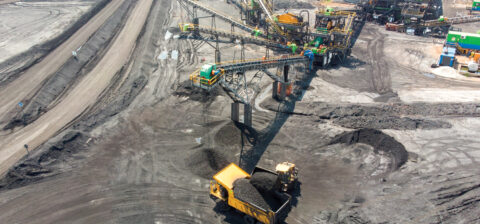SA Mining
Driving Demand For Gold
Gold production is scheduled to peak in 2017/18, tailing off over the next five to 10 years, chief market strategist at the World Gold Council John Reade tells SA Mining in an exclusive interview.
He cites reduced capital investment in gold exploration and subsequently fewer new gold discoveries being made, as well as the time lag between exploration and the development of a new mine, as being the key reasons for lower gold production rates.
This does not bode well either for consumers with a voracious appetite for gold, or the World Gold Council (WGC), which has an “overarching ambition” to grow gold demand and to ensure that it becomes a mainstream financial asset.
Amending and rewriting policy that is restrictive to trading in gold is a key aspect on the World Gold Council’s agenda, and recently the council has been collaborating with Middle Eastern and Russian authorities to amend existing policy such that it advances the purchase of the precious metal and encourages long-term investment, states Reade.
“We intervene in markets where there are barriers, such as the Middle East where the council recently collaborated with Islamic scholars to launch a new Shari’ah Standard that encourages investment in gold.”
According to a press statement issued by the World Gold Council, it worked with the Accounting and Auditing Organisation for Islamic Financial Institutions and Amanie Advisors to develop a Shari’ah Standard on Gold. This aims to provide guidance from the Shari’ah perspective on the usage of gold in financial and investment transactions for Islamic financial institutions and participants.
“The Gold Standard will enable organisations to work more efficiently in creating Shari’ah-compliant gold products, will enhance access to gold in the Islamic world and it will help to address the liquidity management issues currently facing the industry,” the council said in a press statement.
Further, the council has been in talks with the Russian Ministry of Finance to discuss the removal of the high rate of value-added tax (VAT) on gold bullion purchased by private investors. Private investors are subject to a VAT rate of 18% on purchases of gold bars.
According to the WGC’s Gold Investor September 2017 report, Russia is the largest official purchaser of gold in the world and the third-largest producer. In the report, Tatiana Fic, director: central banks and public policy at the World Gold Council, states that in 2016, the Central Bank of Russia bought 201 tonnes of gold, followed by the People’s Bank of China, which purchased 80t of gold. The National Bank of Kazakhstan added 36t to its coffers. In the past 10 years Russia mined more than 2 000t of gold.
It is anticipated that the initiative to remove VAT on gold purchased by private investors will result in a sharp rise in the investment appeal of the commodity and subsequently result in an increase in demand for physical gold in Russia.
Following the council’s intervention, a draft amendment to the Tax Code was recently submitted for consideration to the Russian government and many hope it will be approved.
Gold vs crypto-currencies
While gold and other precious metals have traditionally been a means of hedging against risks (currency collapses and volatile markets), more recently crypto-currencies such as Bitcoin are offering attractive alternatives to investing in gold.
According to Reade, given the appeal of crypto-currencies, it has been noted that “there are instances of cannibalisation with traditional gold investors migrating to crypto-currencies” – but he concedes that this is at a low level as the new-age currency is still at an infancy stage.
“We are seeing a slight increase in the number of gold investors taking up investment in crypto-currencies, but it is also essential to note that this type of trading is mainly a US phenomenon and not as yet widespread.”
While the attraction to crypto-currencies is largely owing to its immunity to government control, the concern is that cyber-currencies have no intrinsic value, as they are not backed by any assets – unlike gold.
Gold production and demand
Initiatives that promote gold such as those by the World Gold Council are certain to push demand for the precious metal beyond the new gold production rate of 3 200tpa.
The rise in the gold price over the past decade from $250/oz to $1 270/oz has seen gold production grow from some 2 500tpa to 3 200tpa.
According to Reade, in 2016 of the 4 593tpa of available gold, 3 264tpa was newly mined gold while 1 295t emanated from recycled sources. Interestingly, China and India together account for nearly 50% of the total gold consumed annually. In 2016, Chinese consumers purchased over 900t, and Indian consumers over 650t.
From an investment point of view, volatile global markets continue to drive demand for gold as a safe-haven commodity, states Reade.
“In fact, central banks are increasing their purchase of gold which is seen partly as a reflection of concern expressed by investors of currency stability and we see central banks adding to their existing gold reserves.”
Together, central banks are holding over 33 000t of gold, he adds.
Interestingly, despite the rise in technological developments and the subsequent expectation that gold – which is used in hi-tech applications such as circuits, electronics, and particularly in fail-safe equipment such as sensors used in vehicle air-bags – would increase with increased technological application, demand stands at a steady 300tpa.
Given the assumption that with the rise in technological advancements more gold will be consumed in the production process thus further driving demand for the precious metal, Reade explains that with the advent of newer product versions, lighter and smaller devices are produced which require less of the precious metal.







 Sign-up and receive the Business Media MAGS newsletter OR SA Mining newsletter straight to your inbox.
Sign-up and receive the Business Media MAGS newsletter OR SA Mining newsletter straight to your inbox.